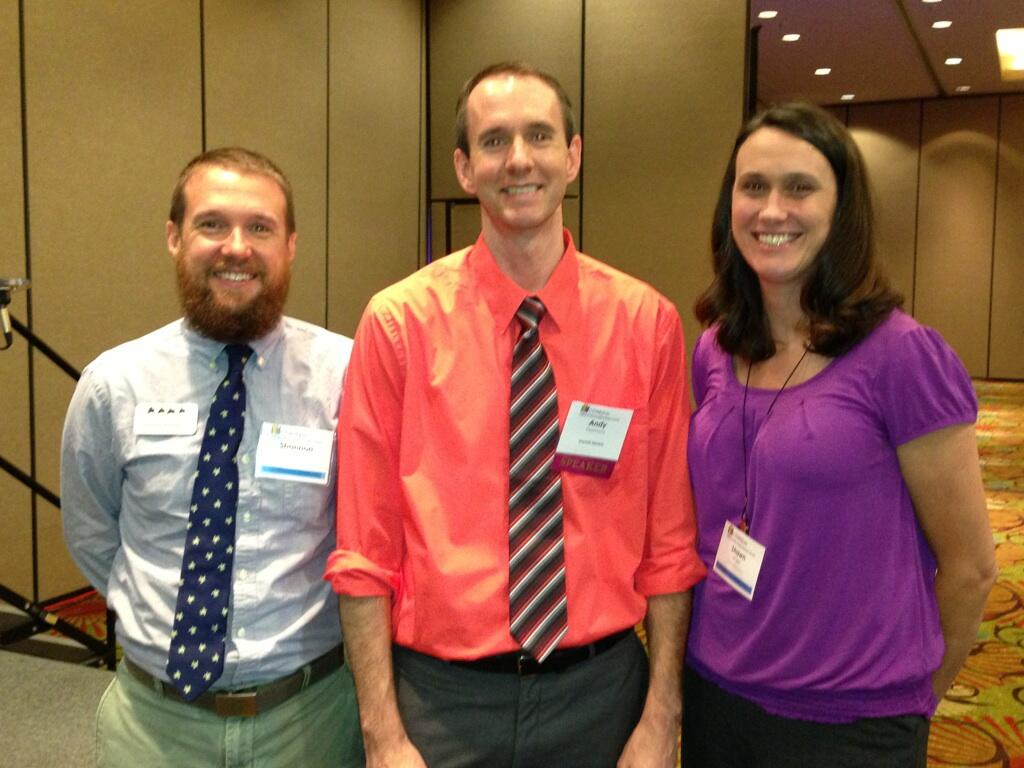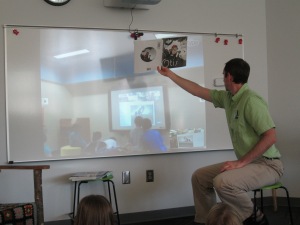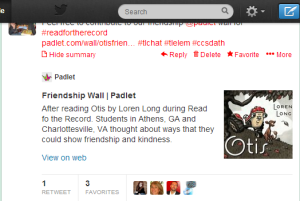 Storybook Parade has been a Barrow tradition for many years. Over the past couple of years, we transistioned from a morning parade to a day-long event. Our schedule now looks something like this:
Storybook Parade has been a Barrow tradition for many years. Over the past couple of years, we transistioned from a morning parade to a day-long event. Our schedule now looks something like this:
- 8:00 Guest readers in every classroom. These readers are parents, family members, community members, and local celebrities.
- 8:30 Classrooms prep for an assembly where we get to see all of the great costumes. Every child dresses as a character from a book.
- 9:00 Assembly. All classes walk across the stage to be seen.
- 10:00 Parade. We march in a single file line out of the front doors of the school and parade down the sidewalks surrounding the UGA Athletic Department, UGA practice fields, and the UGA track.
- 10:30-2:30 Classes continue to hold literature-related activities and sign up for special classes offered throughout the school.
I organize most of the day’s events, but it couldn’t all be done alone. There are just too many pieces to do by myself. This year for guest readers, I created a Signup Genius. I emailed all of our volunteers and former readers, shared the link on Facebook and Twitter, and put it in my newsletter. Camilla Bracewell, Barrow grandparent, also made some phone calls and emails to recruite readers. It didn’t take very long to schedule enough readers for every class, but as usual, during the days leading up to the event, we started getting cancellations. Rather than scramble to find more readers, I had our administrators and specials teachers on standby to read in the event that we needed them.
 For the assembly, I wanted to speed up every class walking across the stage. In the past, every class has written a blurb about their class for me to read. Some classes write a short blurb while others feel the need to describe every costume. This year, Mimi Elliot-Gower, our family engagement specialist, had an idea to use quotes about reading. I made a Google doc of reading quotes and let teachers sign up for a quote that represented her class. I read these quotes as classes went across the stage and we tried to keep a constant flow of traffic.
For the assembly, I wanted to speed up every class walking across the stage. In the past, every class has written a blurb about their class for me to read. Some classes write a short blurb while others feel the need to describe every costume. This year, Mimi Elliot-Gower, our family engagement specialist, had an idea to use quotes about reading. I made a Google doc of reading quotes and let teachers sign up for a quote that represented her class. I read these quotes as classes went across the stage and we tried to keep a constant flow of traffic.
For the parade, we changed our route this year. We used to parade up to Five Points and back, but Lumpkin Street has gotten so busy that we wanted to move most of the parade to some streets that were a bit less congested. Our 5th graders got to make a special stop at the Georgia Center for Continuing Education and have some hot chocolate. Our family engagement specialist, Mimi Elliot-Gower and counselor, Lauren McElhannon, setup this special treat.
 Back at Barrow, teachers had lots of options for what their classes might do the rest of the day. Every specials, EIP, special education, and gifted teacher offered sessions for classes to sign up for. I created a Google spreadsheet schedule and teachers could sign up for up to 2 thirty minute sessions. Examples included:
Back at Barrow, teachers had lots of options for what their classes might do the rest of the day. Every specials, EIP, special education, and gifted teacher offered sessions for classes to sign up for. I created a Google spreadsheet schedule and teachers could sign up for up to 2 thirty minute sessions. Examples included:
- Creating a Gone Google story in the media center using Bone Soup. http://docsstorybuilder.appspot.com/BVlWHe & http://docsstorybuilder.appspot.com/BVkquZ & http://docsstorybuilder.appspot.com/BVkwHA &
- Creating story character epitaphs in the media center after reading Once Upon a Tomb.
- Reading Zen Shorts With our family engagement specialists and practice tai chi.
- In music, read aloud “There Was an Old Lady Who Swallowed a Bat”, then sing “H-A-LL-O-W-EE-N”. Have kids write new lyrics to song.
- Read Creatures of the Night by Joyce Milton: nonfiction activity on nocturnal animals
- and more!
It was a fantastic day with so many books represented. Each year this day grows a little more and includes a few new ideas. Who knows where it will go next year.
 We would like to thank all of our guest readers who came out today to celebrate with us:
We would like to thank all of our guest readers who came out today to celebrate with us:
- Brenda Moon
- Dr. Lanoue
- Kim Ness
- Ralph Stephens
- Alicia Battle
- Paula Shilton
- Carol Williams
- Denise Sims
- Selby Merritt & Isabel
- Bryn Adamson
- Leslye Queen
- Debra Lassiter
- Terry Nestor
- Paul Lee
- Matt Winston
- Chis Stutz
- Josh Miles
- Gail Schrader
- David Meyers
- Kathy Hoard
- Ken Mauldin
- Robert Miles
- Alex Patterson
- Utevia Tolbert















































































